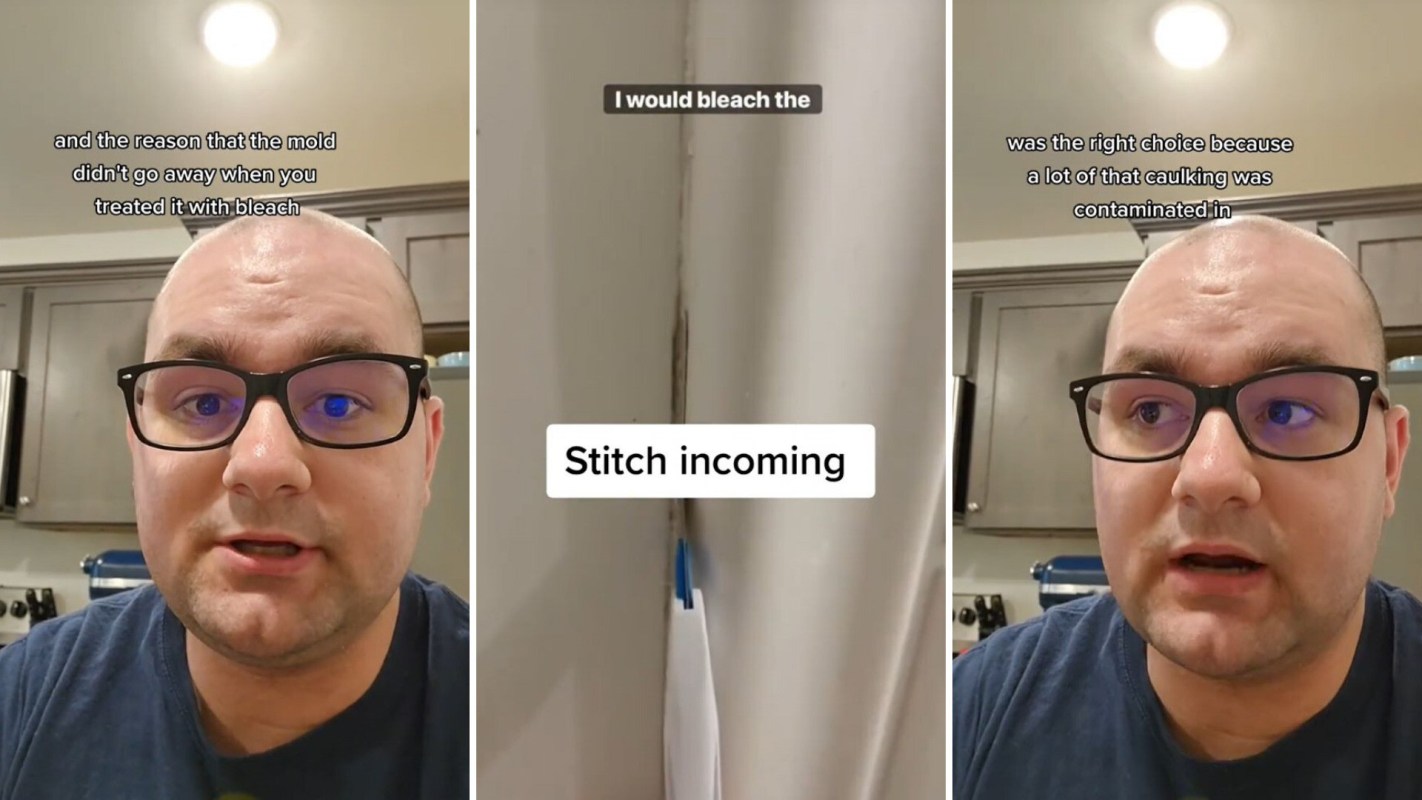Turns out, bleach is not the answer to that nasty mold stain on your shower curtain. There's a better — and healthier — way to clean it, and you probably already have it in your kitchen cabinet.
"Bleach is not a good way to disinfect things that are contaminated with mold," said TikToker Microbiology Wes (@microbiologywes) in a stitched video that responded to a woman who was having problems with mold growth on caulk. She explained that she had been going in circles using bleach repeatedly to clean it, yet the mold would be back within days.
In his video, which has been saved by more than 160,000 people, the microbiologist revealed a doozy: "If you want to get rid of mold, use undiluted white distilled vinegar."
@microbiologywes #stitch with @deepcleanking Vinegar for molds. 10% bleach or 70% alcohol for bacteria and viruses. And let the surface air dry. Don't wipe it dry. #microbiologywes ♬ original sound - Microbiology Wes
He advised viewers to simply spray the vinegar onto the moldy surface or soak the item (in the case of a dish, for instance). Let the vinegar do its job for about an hour. Then, "rinse it off with some water, and you're good to go."
He did give the original poster props for removing the problematic caulk, because a lot of it was contaminated already. Because caulk is so porous, it becomes a breeding ground for mold spores even when treated with a disinfectant, he explained.
This cleaning "solution" is good news if you're looking to save a bit of money. A bottle of vinegar is generally a bit cheaper than bleach, but the real savings comes from the fact that vinegar actually works, so you won't have to buy much of the stuff to get the job done.
Vinegar is also better for your health, as bleach can cause problems when inhaled. If you have asthma, it can make it worse. And it can actually cause asthma in people who have never had it. Children are at greater risk from breathing in bleach vapors because their lungs are still developing.
Breathing in the vapors from bleach over a prolonged period can also increase your risk of cancer, and contact with it can irritate your eyes and skin. While vinegar may have some side effects if ingested, it's generally safe to handle.
Bleach is also an environmental abomination. It's made from the organochlorine family of chemicals, which are rarely found in nature and can take centuries to decompose. In waterways, bleach can form dioxins, which are known carcinogens that threaten aquatic and terrestrial wildlife.
The Great Lakes region of the United States suffers from a high level of organochlorine pollution with hundreds of compounds detected in the water, sediments, and animals.
Wes's followers were grateful for the new information, with one commenting, "This is SO HELPFUL. Thank you!!"
"Another day in Tik Tok school ✍🏼✍🏼✍🏼," another person said. "Thank you Mr. Microbiologist."
"It's always vinegar," another quipped, bringing to attention the fact that vinegar seems to be an underrated cleaning powerhouse.
Join our free newsletter for easy tips to save more, waste less, and help yourself while helping the planet.









